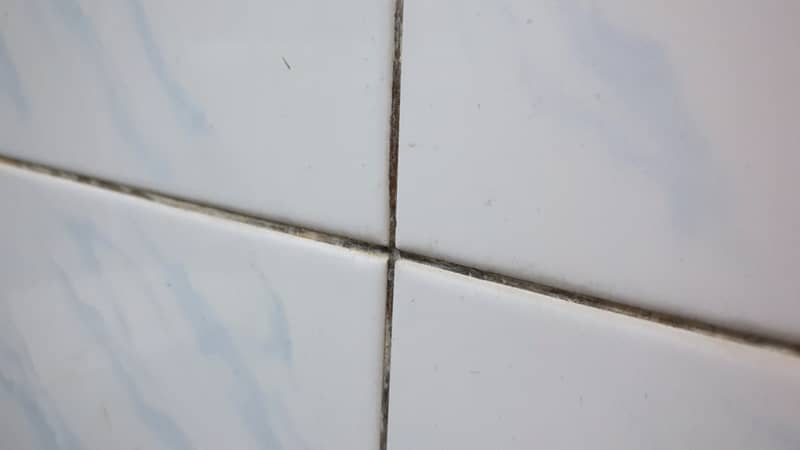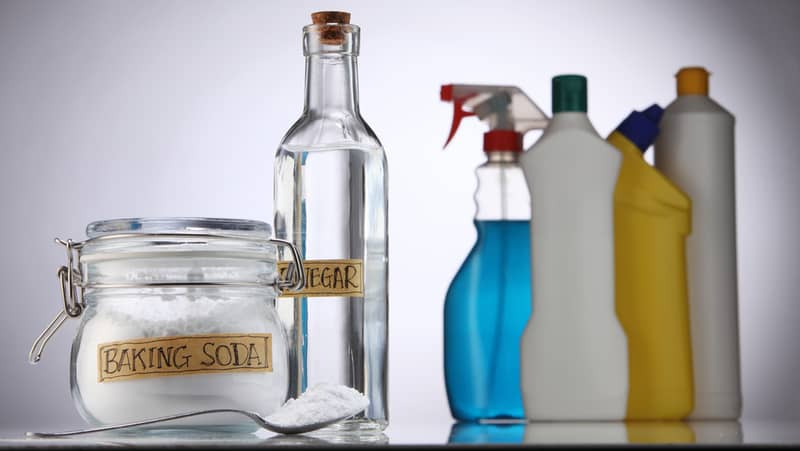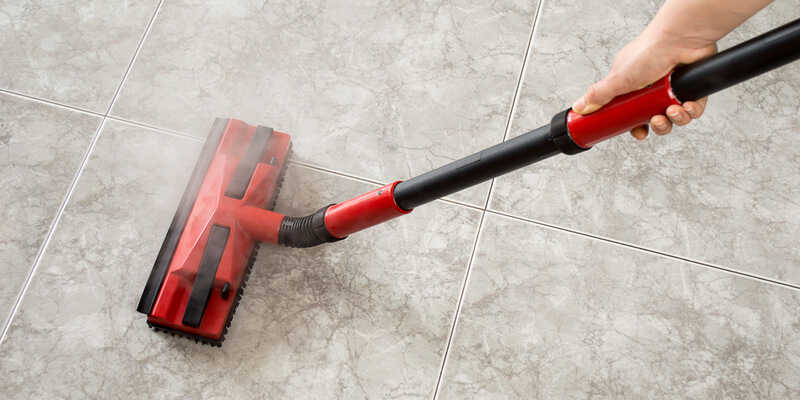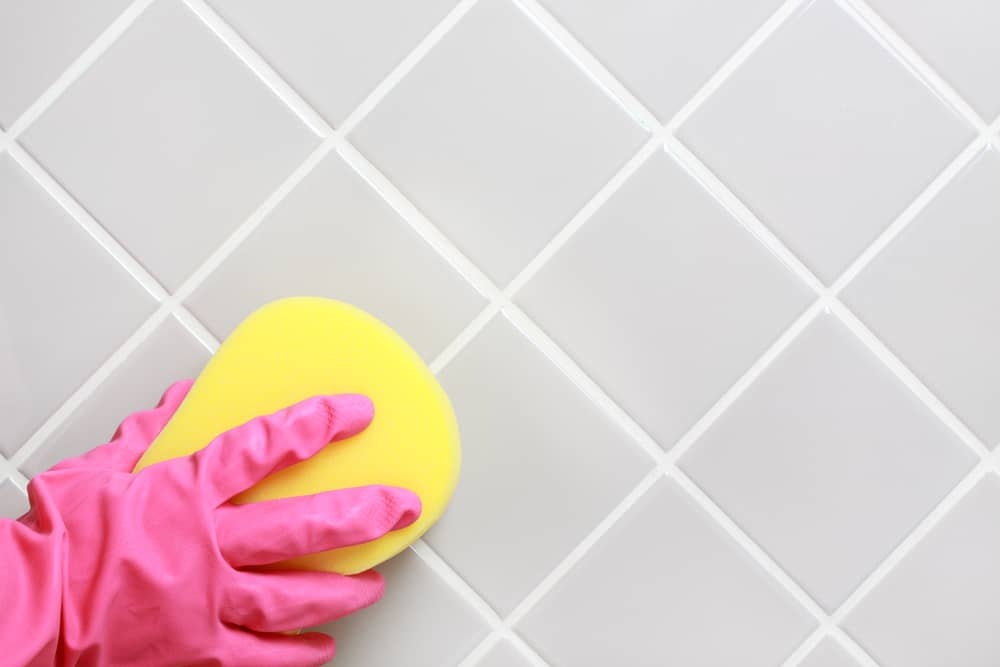Say you’ve finished scrubbing and cleaning your tile floors. You’ve swept and wiped and polished… but your floor still looks dirty. What gives?
Dirty grout may be the culprit! No matter how clean your tiles are, if your grout lines are dark and dingy, your floor won’t look pristine.
But if you’re stuck scrubbing and scrubbing without any results, we’ll let you in on a grout cleaning solution: Just use the right cleaning agents.
Start by identifying the type of tile you have, since this will influence your cleaning mixture. You can’t use bleach or vinegar on stone tiles since this could ruin the finish.
Meanwhile, spraying warm water and vinegar solution can keep porcelain or ceramic tile grout clean.
Got dirty grout lines? Here’s an easy step-by-step guide on how to clean grout properly!
Before You Clean Stained Grout…
Cleaning grout isn’t rocket science, but it does involve some chemistry.
Before you go clean dirty grout, check your tile floor. Identify the type of tile you have in your home so you know which tile cleaner is suitable.
Stone tiles

Limestone, granite, slate, marble – these are all examples of natural stone tiles. To clean these types of tiles, you need to use non-corrosive agents with a neutral pH. Acids like vinegar can react with the stone tiles and cause them to discolour.
Ceramic or porcelain tiles
These materials are sturdier than stone tiles, and can be cleaned using any type of cleaning solution. The most popular are vinegar and baking soda, or chlorine bleach.
Vinyl tiles
While these types of tiles are popular, their design means there is no real “tile grout” to clean! That makes maintaining vinyl tiles much easier, although they won’t have the same finish.
What Caused the Stained Grout?
Besides the tile materials, knowing what caused the stain is a key aspect of grout cleaning. It normally depends on the room your tiles are in.
Bathroom floor

If you’re cleaning bathroom grout, you’ll likely find stains caused by mould and mildew.
Fungi can grow in the grout after prolonged exposure to moisture.
The best cleaning agents for mould and mildew are bicarb soda or bleach.
Kitchen floor
Meanwhile, kitchen floor stains can be anything from spilled liquids to food and grease mess. You can quickly clean food debris or grease with dish soap and plain water, while spilled liquids need some bicarb soda paste on the grout for 5 minutes.
Living room floor
For living areas like the bedroom or living room, grout discolouration can come from simple dust or wear and tear. Regular vacuuming and mopping will help keep your grout lines clean in this case. More stubborn stains and dingy grout can be treated with vinegar and bicarb soda.
Tools for Clean Tile Grout

Once you’ve sorted out your tile type and cause of stains, it’s time to build your cleaning arsenal! We’re listing these cleaning solutions from the mildest to strongest. Don’t you worry – you’ll find something that works.
To clean grout, use one of the following:
- Mild detergent or dish soap
- Baking soda
- White vinegar
- Hydrogen peroxide
- Rubbing alcohol
- Chlorine bleach
- Grout cleaner
- Stain remover
If you don’t have any of these cleaning agents, they’re very easy to find at the local grocery store or home improvement store!
For your cleaning tools, you will need any of the following, depending on cleaning method:
- Nylon brush (or any stiff-bristled brush)
- Old toothbrush
- Spray bottle
- Scouring pad
- Microfibre cloth
- Mop
- Steam mop
Never use a metal brush – you’ll damage the grout lines.
Don’t start cleaning grout without your personal protective equipment, though! There may be fumes that can cause light-headedness, nausea, or burns. Safeguard your health when using potentially harmful chemicals – cleaning is supposed to be fun.
Here is the basic PPE you’ll need for safe grout cleaning:
- Goggles or protective eye covering
- Cleaning gloves
- Face mask
Cleaning Stone Tile Grout
Using chemicals with very low or high pH can damage tiles made of natural stone. Avoid using liquids like vinegar or bleach since they can cause discolouration or ruin the finish.
Instead, use a homemade grout cleaning solution of plain water with a few drops of mild detergent.
Start cleaning stone tile grout by vacuuming any visible dust and dirt. Mop the floor with your cleaning solution, then follow with a clean damp cloth or mop. Use a non-abrasive mop and cloth to avoid scratching the stone surface.
Dry the floor and grout with a clean microfibre cloth, then let it air dry the rest of the way.
Cleaning Porcelain Tile Grout

Ceramic and porcelain floors are durable and easy to maintain. Like with stone floors, start cleaning the grout by vacuuming the dust and dirt on the surface. Again, mop the floors with a mixture of detergent and water.
Remove the soapy residue by wiping the grout clean with a clean, damp mop or cloth. Let the tiles air dry.
Cleaning Grout Without Scrubbing

Yep, you can! With some nifty cleaning agents and a handy steam mop, you can say bye-bye to elbow grease.
Here’s how to clean grout without scrubbing:
- Mix a half and half solution of hydrogen peroxide and baking soda in a bowl.
- Transfer the solution into a spray bottle using a funnel.
- Spray the solution onto the grout.
- Let the solution sit for 15 minutes.
- Lightly brush the scum off with an old toothbrush or a damp cloth.
- Go over the tile floor with a regular, damp mop.
- Work a steam mop over the cleaned grout lines.
- Once the grout is fully dry, apply a grout sealer.
Cleaning Grout Naturally

When it comes to porcelain and ceramic tiles, some stains may be more stubborn than others. Still, they’re not impossible to remove! Even better, the ingredients are right in your kitchen.
This is especially useful when cleaning your bathroom floor (and don’t forget to clean the rest of your bathroom fixtures too).
- Vacuum the dust and dirt off, then mop your floor.
- Mix a half and half solution of water and white vinegar.
- Spray onto any stains and let it sit for 1 minute.
- Sprinkle baking soda generously onto the tile grout.
- Use a nylon brush or old toothbrush, then scrub in a circular motion.
- Make sure you catch even the corners and crevices.
- Rinse again with the water and vinegar solution.
- Wipe the surface dry with a clean cloth.
- Let the floor air dry the rest of the way.
Protect Tile Grout
They say an ounce of prevention is worth a pound of cure. This simple routine takes less than 10 minutes and will save you heaps of cleanup time in the future.
- Dip a piece of cotton ball in rubbing alcohol, then swab it on your tile grout to protect it from mould growth.
- Do a weekly preventive treatment by spraying vinegar on your tile grout, then wiping with a clean microfibre cloth after spraying.
- It’s important to seal grout to keep it protected. Use a grout sealer when your tile grout is 100% dry after cleaning so no moisture seeps in. Do this after new tile installations, and re-apply twice a year.
Grout Cleaning Tips
Are you afraid you’re missing (gr)out on some tips? Here are some grout cleaning secrets from an expert!
Choose how to clean shower grout depending on the severity of the stain. If you can get away with using plain bicarb soda and vinegar, stick with it.
Use bleach only if necessary. This is for very stubborn stains that need instant whitening. Apply a few drops onto the stained grout lines and watch the magic happen – no scrubbing necessary. Just remember to use protective equipment, then rinse with water afterwards.
Sometimes we run out of cleaning power, or deep cleaning grout is simply beyond us. That’s the time to call a house cleaning company to take over the job! Leave your home in the hands of the experts and they’ll have your grout lines looking good as new. Then you can show off your clean floors to guests, real estate agents, even landlords – without having to put in the elbow grease.
Now you know how to clean grout. Go have a grout time (get it?) and show off your clean white tiles – or whatever colour you own – with matching clean grout lines.

